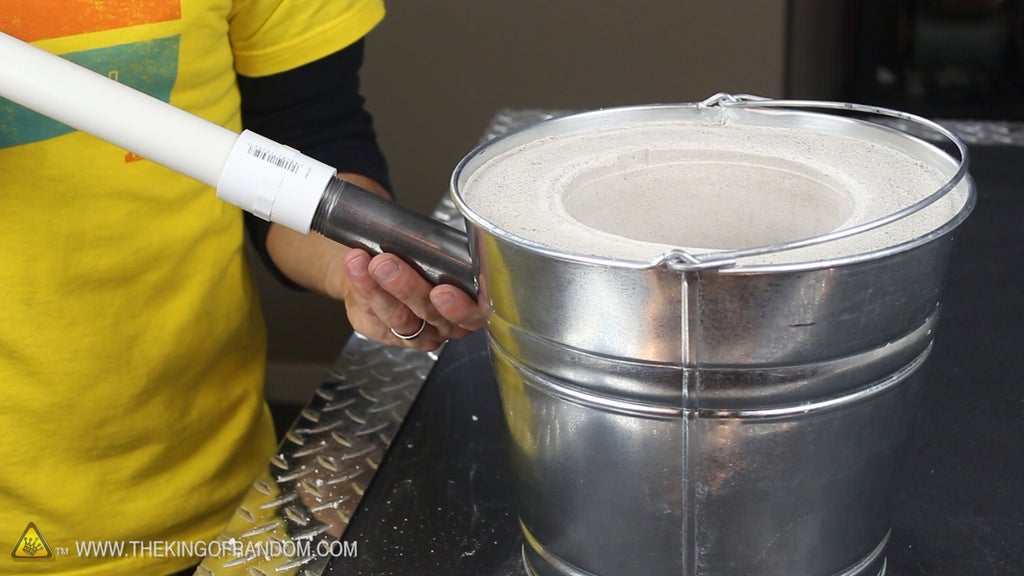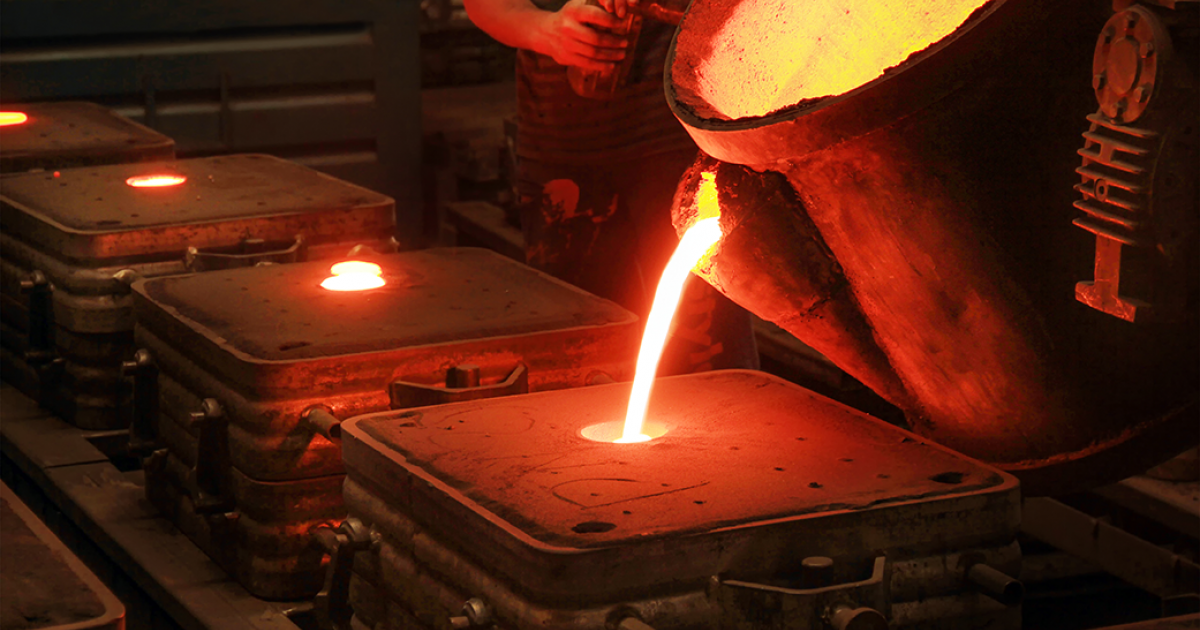Comprehending Metal Casting Processes: Developments and Patterns in the Foundry Sector
The foundry sector is experiencing considerable changes driven by technical innovations. Developments such as 3D printing and expert system are improving metal casting procedures, improving effectiveness and precision. Sustainable practices are gaining traction, emphasizing the importance of ecological obligation. On top of that, the intro of innovative products and automation is boosting overall casting quality. These growths recommend a critical shift in the industry, elevating concerns regarding future directions and implications for suppliers.
Innovations in 3D Printing for Metal Casting
Current improvements in 3D printing technology have actually significantly changed the landscape of metal casting. The integration of additive production methods has actually allowed the rapid manufacturing of complicated patterns and molds that were previously tough or difficult to attain with traditional techniques. By making use of materials such as sand and steel powders, makers can create intricate geometries that improve design versatility and reduce product waste. This advancement not only expedites the prototyping process but likewise enables the personalization of components customized to particular applications.
Furthermore, 3D printing facilitates much shorter lead times, which is essential in sectors requiring quick turn-around for parts. The modern technology also supports the manufacturing of lightweight structures, thereby improving energy performance in output. Because of this, the foundry industry is seeing a change in the direction of more sustainable methods, driven by the effectiveness and precision used by these modern-day 3D printing techniques in metal casting procedures.
The Function of Artificial Knowledge in Precision Production
As industries significantly take on sophisticated production technologies, fabricated intelligence (AI) is playing a pivotal function in enhancing precision production processes. AI algorithms analyze large datasets to determine patterns and optimize production parameters, causing improved accuracy and performance. In metal casting, AI aids in anticipating upkeep, decreasing downtime by projecting equipment failures prior to they occur.
Furthermore, AI-driven simulations allow makers to model the casting process, refining styles and minimizing defects. Artificial intelligence strategies improve high quality control by finding anomalies in real-time, thereby guaranteeing that only items fulfilling rigorous requirements continue through the assembly line.

Lasting Practices in the Foundry Sector
Sustainability has actually arised as a critical focus in the foundry sector, triggering makers to embrace practices that lessen ecological influence while maintaining efficiency - Aluminum Foundry. One popular technique consists of the recycling of products, specifically steels, which considerably reduces waste and energy usage. Factories are progressively carrying out closed-loop systems, enabling the reuse of sand and various other casting products, consequently minimizing the need for virgin resources
Additionally, energy-efficient innovations, such as electric heating systems, are acquiring traction, as they lower greenhouse gas discharges compared to standard methods. Many shops are checking out the use of environment-friendly coatings and naturally degradable binders to lower harmful byproducts. Employee training on sustainable methods has likewise ended up being vital, fostering a culture of environmental obligation within companies. In general, these sustainable methods not just contribute to environmental preservation but likewise enhance the long-term feasibility of the foundry sector in an increasingly eco-conscious market.
Developments in Products for Boosted Casting Quality
With the constant evolution of the foundry market, advancements in products have come to be crucial for enhancing casting high quality. Advanced alloys and composite materials are progressively being made use of to enhance mechanical residential or commercial properties and reduce problems in castings. These products typically use remarkable strength-to-weight ratios and improved resistance to corrosion and wear, dealing with the demands of contemporary applications.
Additionally, the consolidation of nanomaterials is getting traction, permitting finer microstructures that cause boosted surface area coatings and dimensional precision. Aluminum Foundry. 3D printing modern technologies also contribute in generating complicated geometries with very little waste, allowing making use of specific products that were previously testing to cast
Additionally, the growth of eco-friendly binders and ingredients adds to lasting techniques while keeping high-quality results. Jointly, these advancements not only improve the performance of cast products but additionally straighten with the market's shift in the direction of sustainability and performance.
Automation and Robotics in Metal Casting Processes
Automation and robotics are reinventing metal casting procedures by enhancing operations and boosting precision. In modern foundries, robot systems are utilized for jobs such as mold and mildew handling, putting, and ending up, significantly reducing human treatment. This not just minimizes the risk of crashes but likewise guarantees consistent top quality in production.
Automation technologies, such as computer mathematical control (CNC) equipments, facilitate intricate styles and complex geometries that were formerly challenging to achieve. Real-time data analytics make it possible for makers to maximize and keep track of procedures efficiency continually.
The integration of automation causes raised productivity and performance, permitting factories to fulfill growing market demands while minimizing preparations. As the industry welcomes these developments, the labor force is likewise evolving, requiring new skills to operate and keep sophisticated machinery. In general, the adoption of automation and robotics is a critical fad forming the future of metal casting processes.
Regularly Asked Concerns
What Is the Background of Metal Casting Strategies?
Metal casting strategies day back to old worlds, with evidence of bronze casting in Mesopotamia around 3000 BCE. Over centuries, techniques developed greatly, including advancements in materials and modern technology, shaping modern industrial methods.
Just How Does Metal Casting Impact the Atmosphere?
Metal casting considerably influences the atmosphere through power consumption, exhausts, and waste generation. Developments in lasting techniques and innovations aim to mitigate these results, promoting even more eco pleasant techniques within the sector.
What Safety And Security Procedures Are Vital in Foundries?

What Prevail Problems in Metal Casting Products?
Typical issues in metal casting items include porosity, shrinkage, misruns, chilly shuts, and surface blemishes. These problems occur from elements such as incorrect temperature control, poor mold and mildew layout, and contamination website throughout the casting process.
How Do Foundries Make Sure Quality Assurance in Casting Processes?
Factories carry out rigorous quality assurance steps with routine evaluations, standard screening, procedure tracking, and adherence to industry requirements. These techniques help identify issues early, guaranteeing the integrity and dependability of the last casting items.
Innovations such as 3D printing and artificial intelligence are improving metal casting procedures, improving effectiveness and precision. Current developments in 3D printing technology have actually considerably transformed the landscape of steel casting. Automation and robotics are changing steel casting processes by enhancing operations and enhancing precision. Metal casting methods date back to old human beings, with proof of bronze casting in Mesopotamia around 3000 BCE. Usual defects in metal casting items include porosity, shrinking, misruns, cool shuts, and surface blemishes.